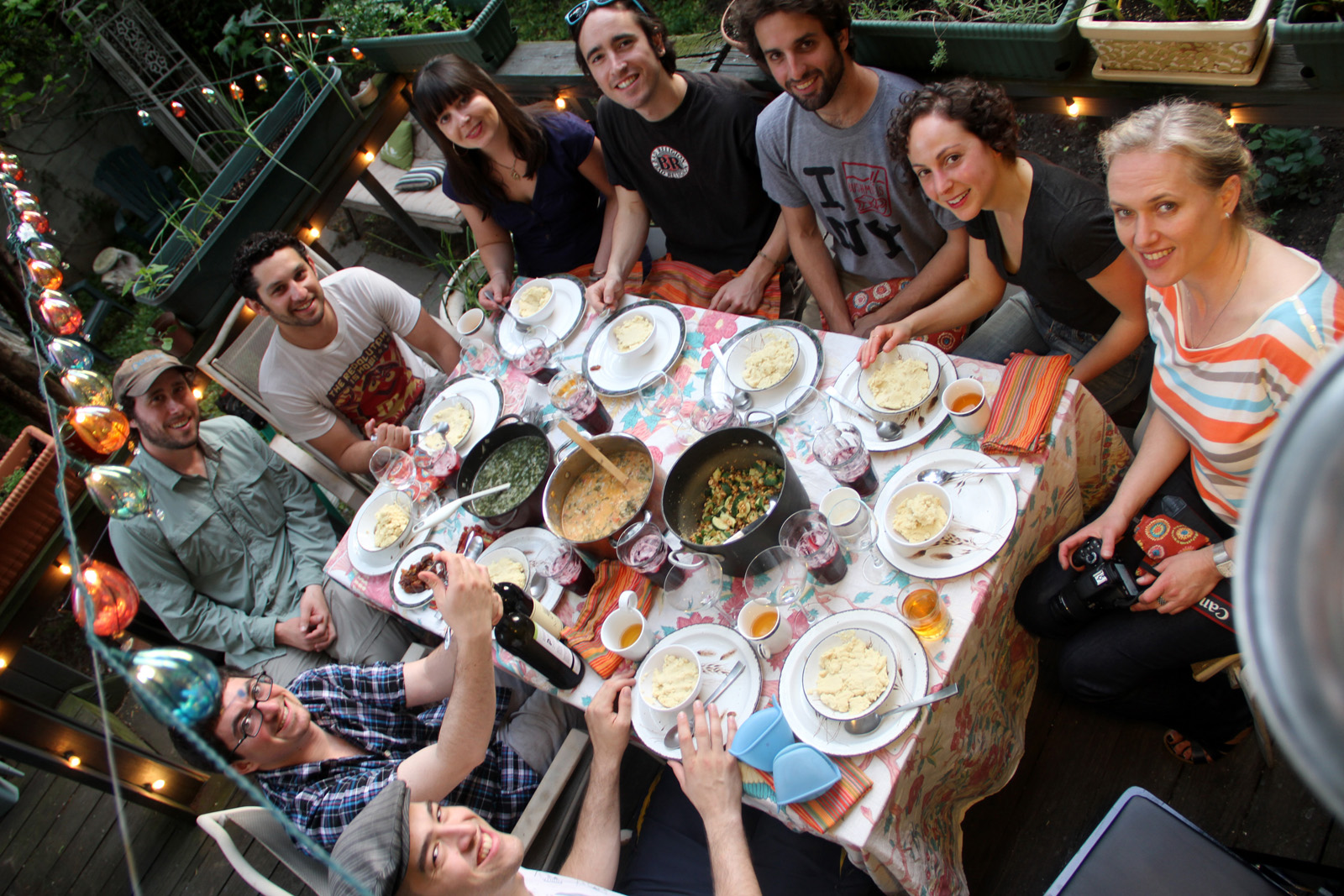Chad spans the three S's of the heart of Africa: the Sahara desert in the north, the arid Sahel in the middle, and the wetter savanna to the south. Or put into culinary terms, this extent is why we see both dates and peanuts factor into this meal.
However, on the heels of the generically-named Central African Republic, Chad's another country that poses some online searching problems, at least in English. To wit, I was looking for advice on cooking the staple grain of that country, but a search for [chad millet] turns up a doctor with that name in Louisiana. Fortunately, French provides a nice opportunity for disambiguation: they spell it Tchad, and as far as I could tell, nobody goes by that name.
Chad's going through a rough time right now: the food crisis in the Sahel has made food scarce and expensive across much of the middle of the country, and unfortunately the World Food Program is predicting a looming humanitarian disaster. They're hoping to help 1.2 million people in Chad alone — now would be an excellent time to consider helping before the situation turns from "extreme" to "famine." Our guests' generous donations tonight, after matching, will enable WFP to provide 1,000 meals.
Tonight's guests included Matt Green, a nosher with a mission: to walk every single street of New York City. Check him out! We also welcomed Matt's friend Jason, Laura's psychogeography professor Rachel and classmates Alex, Grayson, and Gabi, and Bradley and Jenny. Although Chadians are relatively big meat-eaters, we kept this meal pescatarian.
Karkanji | Hibiscus drink | Recipe (translated to English)

Along with the traditional Chadian welcome of sweet green tea, dates and peanuts (according to this page), we served this super-refreshing drink made of steeped hibiscus flowers (aka sorrel, or jamaica in Spanish). With ginger, cinnamon, and cloves, this tasted downright Christmassy. All the ingredients are so pungent that I made two batches from the same base of stuff, I just added more sugar and water and steeped it again.
Sauce koumragan | Sorrel leaf sauce | Recipe (translated to English)

I was planning on making a dish with okra, but when I happened upon bunches of sorrel at the farmer's market, I had to let fate sway me. The full-circle nature of this is just too good: use the flowers for the drink, and the leaves for the dish! I modified the recipe to be vegetarian: I upped the onions and added tomatoes in place of meat, and used porcini bouillon cubes (hey, it's what I had on hand) in place of veal bouillon. Turned out pretty tasty!
Mulukhiya | Recipe (translated to English)

Whatever goopiness we missed from skipping okra, this one made up for in abundance. This plant is sometimes known as mallow, in fact its mucilaginous properties are what they used to lean on to make marshmallows before they discovered more convenient ways to make sugar goop together in a fluffy manner. It was kind of hard to get beyond the texture because the dish itself wasn't terribly flavorful, despite the exotic smoked fish which added surprisingly little. I know we'll encounter this vegetable again as we go through Arab lands so I hope to improve on my mallowmaking.
Courgettes avec des arachides | Squash with peanuts | Recipe

Seems so simple, with nothing more than salt to flavor it, but this mix of squash (or in this case zucchini) and peanuts is really tasty: both peanuts and summer squash are mildly sweet, and the mushy and crunchy play off each other well. If you choose to make this, note that the five-to-ten-minutes for sauteeing until soft is wildly optimistic, I budgeted 20 to 30 minutes and used it all.
Boule | Millet ball | Recipe

Another African country, another fufu derivation! In Chad the staple grain is millet, though it was tough to find instruction on how to actually prepare it. I finally found this one that advised putting a little wheat flour in, and that probably helped it thicken up. Following instructions, we pressed the mush into lightly greased bowls and inverted them to eat from.
Jus de fruit | Fruit shakes | Recipe

Pretty straightforward and tasty, we made them with both mango and papaya. Even better with some rum.
Fangasso | Fluffy beignets | Recipe

A rather common name for these crispy, airy concoctions is pets de nonne, or "nun's farts." I'd never quite made anything this way before; from the initial instruction of melting butter in water it was all an unfamiliar approach, but I'll be darned, once batter hit oil, these things puffed up and got all lovely. The one modification I made was to cook them in palm oil, hopefully it was something like you'd get on the street in N'Djamena.
And that does it for our stretch of six African countries in eight meals! We take a break next weekend, followed by a trip to the Catskills where we'll cook Chile.
All photos by Laura Hadden who, after the guests went home, accidentally ate the beignet batter thinking it was boulet.
